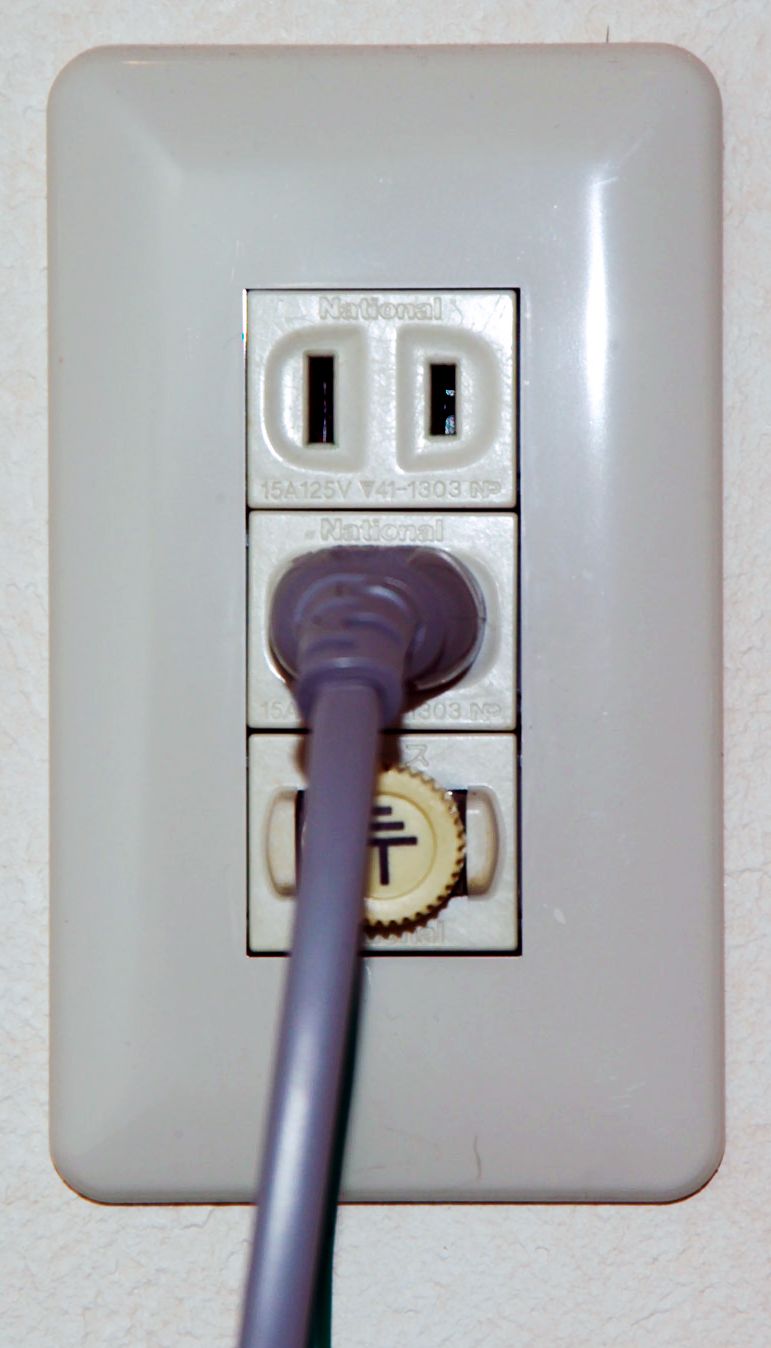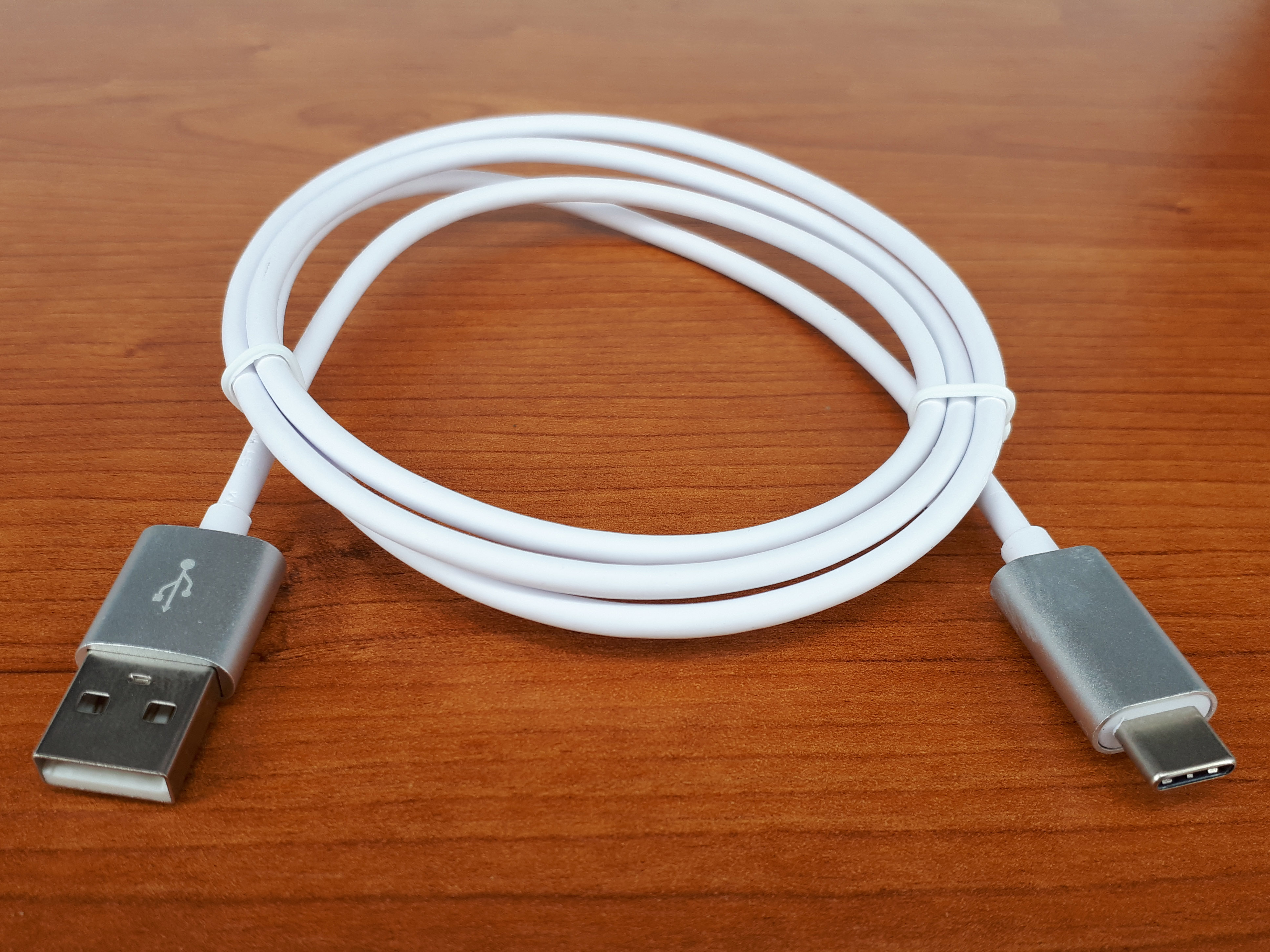|
Power Cord
A power cord, line cord, or mains cable is an electrical cable that temporarily connects an appliance to the mains electricity supply via a wall socket or extension cord. The terms are generally used for cables using a power plug to connect to a single-phase alternating current power source at the local line voltage (generally 100 to 240 volts, depending on the location). The terms power cable, mains lead, flex or kettle lead are also used. A lamp cord (also known as a zip cord) is a light-weight, ungrounded, single-insulated two-wire cord used for small loads such as a table or floor lamp. A cord set includes connectors molded to the cord at each end (see Appliance coupler). Cord sets are detachable from both the power supply and the electrical equipment, and consist of a flexible cord with electrical connectors at either end, one male, and one female. One end of the cord set is attached to a molded electrical plug; the other is typically a molded electrical receptacle to pre ... [...More Info...] [...Related Items...] OR: [Wikipedia] [Google] [Baidu] |
Appliance Coupler
IEC 60320 Appliance couplers for household and similar general purposes is a set of standards from the International Electrotechnical Commission (IEC) specifying non-locking connectors for connecting power supply cords to electrical appliances of voltage not exceeding 250 V (a.c.) and rated current not exceeding 16 A. Different types of connector (distinguished by shape and size) are specified for different combinations of current, temperature and earthing requirements. Unlike IEC 60309 connectors, they are not coded for voltage; users must ensure that the voltage rating of the equipment is compatible with the mains supply. The standard uses the term ''coupler'' to encompass connectors on power cords and power inlets and outlets built into appliances. The first edition of IEC 320 (later renumbered IEC 60320) was published in 1970. Terminology ''Appliance couplers'' enable the use of standard inlets and country-specific cord sets which allow manufacturers to produce t ... [...More Info...] [...Related Items...] OR: [Wikipedia] [Google] [Baidu] |
Power Cables
A power cable is an electrical cable, an assembly of one or more electrical conductors, usually held together with an overall sheath. The assembly is used for transmission of electrical power. Power cables may be installed as permanent wiring within buildings, buried in the ground, run overhead, or exposed. Power cables that are bundled inside thermoplastic sheathing and that are intended to be run inside a building are known as NM-B (nonmetallic sheathed building cable). Flexible power cables are used for portable devices, mobile tools, and machinery. History The first power distribution system developed by Thomas Edison in 1882 in New York City used copper rods, wrapped in jute and placed in rigid pipes filled with a bituminous compound. Although vulcanized rubber had been patented by Charles Goodyear in 1844, it was not applied to cable insulation until the 1880s, when it was used for lighting circuits. Rubber-insulated cable was used for 11,000-volt circuits in 1897 install ... [...More Info...] [...Related Items...] OR: [Wikipedia] [Google] [Baidu] |
Power Supply
A power supply is an electrical device that supplies electric power to an electrical load. The main purpose of a power supply is to convert electric current from a source to the correct voltage, current, and frequency to power the load. As a result, power supplies are sometimes referred to as electric power converters. Some power supplies are separate standalone pieces of equipment, while others are built into the load appliances that they power. Examples of the latter include power supplies found in desktop computers and consumer electronics devices. Other functions that power supplies may perform include limiting the current drawn by the load to safe levels, shutting off the current in the event of an electrical fault, power conditioning to prevent electronic noise or voltage surges on the input from reaching the load, power-factor correction, and storing energy so it can continue to power the load in the event of a temporary interruption in the source power (uninterruptible ... [...More Info...] [...Related Items...] OR: [Wikipedia] [Google] [Baidu] |
Power Strip
A power strip is a block of electrical sockets that attaches to the end of a flexible cable (typically with a mains plug on the other end), allowing multiple electrical devices to be powered from a single electrical socket. Power strips are often used when many electrical devices are in proximity, such as for audio, video, computer systems, appliances, power tools, and lighting. Power strips often include a circuit breaker to interrupt the electric current in case of an overload or a short circuit. Some power strips provide protection against electrical power surges. Typical housing styles include strip, rack-mount, under-monitor and direct plug-in. Control Some power strips include a master switch to turn all devices on and off. This can be used with simple devices, such as lights, but not with most computers, which must use shutdown commands from the software. Computers may have open files, which may be damaged if the power is simply turned off. Some power strips have indi ... [...More Info...] [...Related Items...] OR: [Wikipedia] [Google] [Baidu] |
Extension Cord
An extension cord (US), power extender, drop cord, or extension lead (UK) is a length of flexible electrical power cable (flex) with a AC power plugs and sockets, plug on one end and one or more sockets on the other end (usually of the same type as the plug). The term usually refers to mains electricity, mains (household AC) extensions but is also used to refer to extensions for other types of cabling. If the plug and power outlet are of different types, the term "adapter cord" may be used. Most extension cords range from around two to thirty feet in length although they are made up to 300 feet in length. The term "extension cord" has been in use since at least 1925. Extension cords come in various colors, lengths, thicknesses and service duties. In general, the more power needed by the appliance, the thicker the cord needs to be (meaning larger Electrical conductor, wires inside). Cords which will be used outdoors, in wet areas, around oils, or exposed to sunlight for long per ... [...More Info...] [...Related Items...] OR: [Wikipedia] [Google] [Baidu] |
Transformer
A transformer is a passive component that transfers electrical energy from one electrical circuit to another circuit, or multiple circuits. A varying current in any coil of the transformer produces a varying magnetic flux in the transformer's core, which induces a varying electromotive force (EMF) across any other coils wound around the same core. Electrical energy can be transferred between separate coils without a metallic (conductive) connection between the two circuits. Faraday's law of induction, discovered in 1831, describes the induced voltage effect in any coil due to a changing magnetic flux encircled by the coil. Transformers are used to change AC voltage levels, such transformers being termed step-up or step-down type to increase or decrease voltage level, respectively. Transformers can also be used to provide galvanic isolation between circuits as well as to couple stages of signal-processing circuits. Since the invention of the first constant-potential transfo ... [...More Info...] [...Related Items...] OR: [Wikipedia] [Google] [Baidu] |
AC Adapter
An AC adapter or AC/DC adapter is a type of external power supply, often enclosed in a case similar to an AC plug. Other common names include wall wart, power brick, wall charger, and power adapter. Adapters for battery-powered equipment may be described as chargers or rechargers (see also battery charger). AC adapters are used with electrical devices that require power but do not contain internal components to derive the required voltage and power from mains power. The internal circuitry of an external power supply is very similar to the design that would be used for a built-in or internal supply. External power supplies are used both with equipment with no other source of power and with battery-powered equipment, where the supply, when plugged in, can sometimes charge the battery in addition to powering the equipment. Use of an external power supply allows portability of equipment powered either by mains or battery without the added bulk of internal power components, and ... [...More Info...] [...Related Items...] OR: [Wikipedia] [Google] [Baidu] |
UL (safety Organization)
The UL enterprise is a global safety science company headquartered in Northbrook, Illinois, composed of three organizations, UL Research Institutes, UL Standards & Engagement and UL Solutions. Established in 1894, the UL enterprise was founded as the Underwriters' Electrical Bureau (a bureau of the National Board of Fire Underwriters), and was known throughout the 20th century as Underwriters Laboratories. On January 1, 2012, Underwriters Laboratories became the parent company of a for-profit company in the U.S named UL LLC, a limited liability corporation, which took over the product testing and certification business. On June 26, 2022, the companies rebranded into three distinct organizations that make up the UL enterprise. UL Solutions partners with customers and stakeholders in more than 100 countries to help solve safety, security and sustainability challenges and is also responsible for managing and issuing the highly respected portfolio of UL Marks. The company is one of s ... [...More Info...] [...Related Items...] OR: [Wikipedia] [Google] [Baidu] |
Electrical Wiring
Electrical wiring is an electrical installation of cabling and associated devices such as switches, distribution boards, sockets, and light fittings in a structure. Wiring is subject to safety standards for design and installation. Allowable wire and electrical cable, cable types and sizes are specified according to the circuit operating voltage and electric current capability, with further restrictions on the environmental conditions, such as ambient temperature range, moisture levels, and exposure to sunlight and chemicals. Associated circuit protection, control, and distribution devices within a building's wiring system are subject to voltage, current, and functional specifications. Wiring safety codes vary by locality, country, or region. The International Electrotechnical Commission (IEC) is attempting to harmonise wiring standards among member countries, but significant variations in design and installation requirements still exist. Wiring codes of practice and regulat ... [...More Info...] [...Related Items...] OR: [Wikipedia] [Google] [Baidu] |
IEC 60320
IEC 60320 Appliance couplers for household and similar general purposes is a set of standards from the International Electrotechnical Commission (IEC) specifying non-locking connectors for connecting power supply cords to electrical appliances of voltage not exceeding 250 V (a.c.) and rated current not exceeding 16 A. Different types of connector (distinguished by shape and size) are specified for different combinations of current, temperature and earthing requirements. Unlike IEC 60309 connectors, they are not coded for voltage; users must ensure that the voltage rating of the equipment is compatible with the mains supply. The standard uses the term ''coupler'' to encompass connectors on power cords and power inlets and outlets built into appliances. The first edition of IEC 320 (later renumbered IEC 60320) was published in 1970. Terminology ''Appliance couplers'' enable the use of standard inlets and country-specific cord sets which allow manufacturers to produce ... [...More Info...] [...Related Items...] OR: [Wikipedia] [Google] [Baidu] |
Voltage Converter
A voltage converter is an electric power converter which changes the voltage of an electrical power source. It may be combined with other components to create a power supply. AC and DC AC voltage conversion uses a transformer. Conversion from one DC voltage to another requires electronic circuitry (electromechanical equipment was required before the development of semiconductor electronics), like a DC-DC converter. Mains power (called household current in the US) is universally AC. Practical voltage converters Mains converters A common use of the voltage converter is for a device that allows appliances made for the mains voltage of one geographical region to operate in an area with different voltage. Such a device may be called a ''voltage converter'', ''power converter'', ''travel adapter'', etc. Most single phase alternating-current electrical outlets in the world supply power at 210–240 V or at 100–120 V. A transformer or autotransformer can be used; (auto)tr ... [...More Info...] [...Related Items...] OR: [Wikipedia] [Google] [Baidu] |









